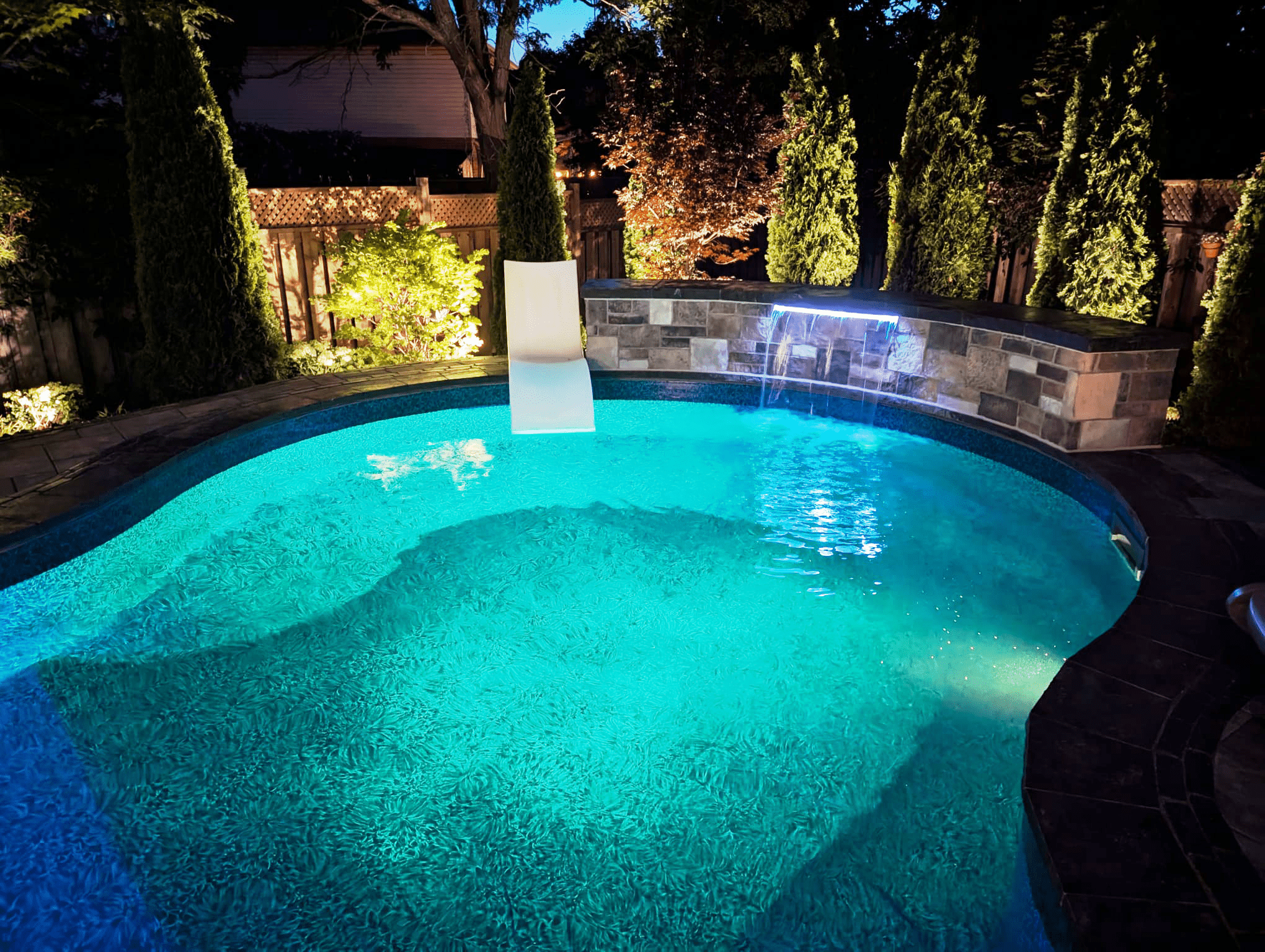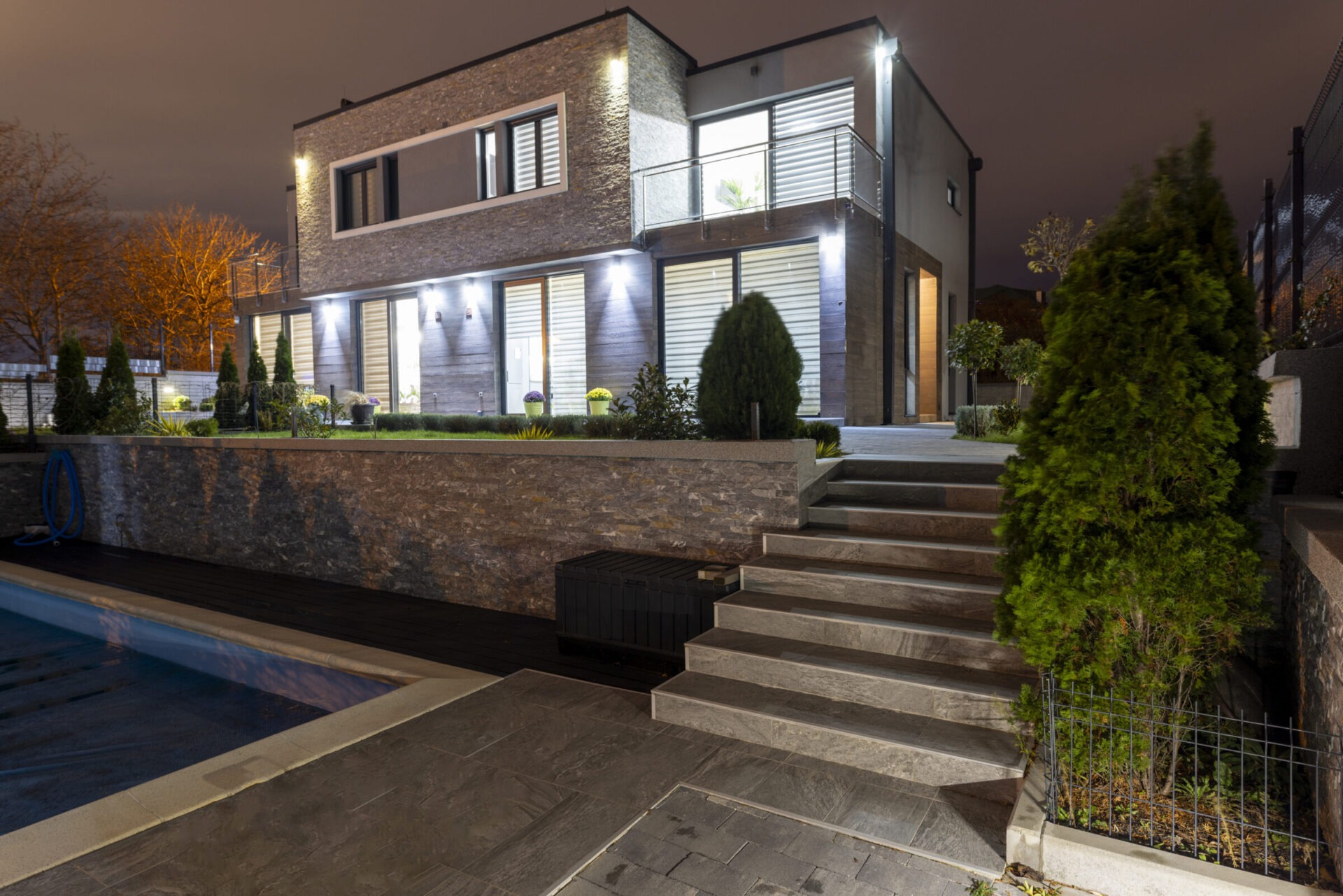The Importance of Landscape Lighting in Toronto’s Urban Settings

Landscape lighting in Toronto often goes unnoticed, even though it influences how safe, efficient, and inviting your property feels. Many homeowners and property managers struggle with paths that disappear into darkness and entrances that cause hesitation after dusk. Without clear illumination, you can misjudge steps, encounter glare, or waste energy with poorly placed fixtures. This inconvenience makes your outdoor spaces feel unused and deters you from enjoying them, especially in long evenings.
It is frustrating when your efforts to guide guests or residents are undermined by lights that are too bright or too dim. You might feel embarrassed when visitors stumble on an uneven walkway or when neighbours complain about stray light spilling into their windows. These feelings can lead to stress about safety and waste and prevent you from appreciating the beauty of your own landscape.
Thankfully, you can take control. In this series, we will explore how to choose and position lights that enhance security, respect the night sky, fit small spaces and endure our seasons. We’ll share straightforward design principles and highlight fixtures and techniques tailored to our climate. By the end, you’ll be equipped to create inviting and responsible illumination for every corner of your property.
How Does Landscape Lighting In Toronto Improve Safety & Wayfinding?

Walking along your property at night should feel natural and comfortable. When landscape lighting in Toronto is planned with care, you and your guests can navigate paths and entryways without hesitation. Instead of bright floodlights or random solar markers, think about how each fixture guides the eye and signals changes in level.
- Evenly spaced path lights: Low-voltage LED stake lights spaced along the path define the route and prevent tripping. Aim them downward to avoid glare.
- Recessed step or deck lights: Set into risers or stair edges, these lights mark elevation changes. Frosted lenses soften the beam.
- Downlights for wayfinding: Mount fixtures in trees or under overhangs to cast gentle cones on seating areas and junctions.
- Accent markers: Small spotlights on house numbers, gateposts or boulders act as visual cues.
Avoid overdoing brightness. Experts suggest a warm white colour temperature around 3000 Kelvin and shielded fixtures so light is targeted only where needed. Uniform brightness across the path prevents harsh contrast. During winter, you’ll appreciate how proper landscape lighting in Toronto helps you identify icy patches or snow‑covered steps.
Plan for our seasonal climate by clearing fixtures after snowfall and trimming foliage that might block light in summer. Place lights high enough to avoid snow drifts. You might also want motion sensors or timers so that lights come on automatically at dusk and save power while guiding late‑night arrivals.
Material choice influences long‑term safety. Powder‑coated aluminium or brass housings resist rust through freeze‑thaw cycles. LED bulbs generate little heat and remain bright even in cold weather. Check that connections and power supplies are rated for outdoor use and that cables are buried properly to prevent tripping hazards.
Thoughtful design gives you confidence after dark and enhances the first impression of your home. If you’d like professional guidance, explore our enhancements service to discover options tailored to your property.
What Design Principles Make Landscape Lighting In Toronto Energy Efficient & Dark Sky Friendly?
Lights that respect the night sky and your power bill start with simple design choices. When you consider how landscape lighting in Toronto affects neighbours, wildlife and your own sense of well‑being, you can create scenes that are welcoming without wasting energy. A five‑point checklist keeps the essentials clear:
- Purposeful placement: Every fixture should serve a task such as guiding a footpath or highlighting an entry.
- Targeted beams: Shielded fixtures and proper aiming keep light directed at the ground or feature. This prevents glare and stops light from drifting.
- Low light levels: Use just enough brightness to see. Overlighting makes it harder for your eyes to adapt. Warm white LEDs provide good colour rendering without harshness.
- Automatic controls: Timers, motion sensors, and dimmers ensure lights operate only when necessary. These controls help landscape lighting in Toronto stay efficient across seasons and reduce wasted electricity.
- Warm colour temperature: Choose bulbs with a colour temperature of 3000 Kelvin or lower to support wildlife and human sleep cycles while still delivering clear illumination.
Another important consideration is shielding to keep stray light from rising upward. In our urban environment, this protects night views of stars and makes your space feel calm.
Following this checklist helps you meet local recommendations while saving energy. Look for LED fixtures with high efficacy ratings and long lifespans, and consider using solar‑powered accents in areas with good sun exposure. When you maintain dark sky friendly practices, you also emphasize the beauty of your gardens, trees and architectural elements because your eyes aren’t competing with glare.
These principles apply whether you’re lighting a single walkway or an entire condominium courtyard. They also provide a flexible framework you can revisit as your needs change. By being intentional with design and technology, you’ll see that thoughtful outdoor lighting can be beautiful and efficient.
Which Fixtures & Techniques Work Best For Landscape Lighting In Toronto Condos & Townhomes?

Smaller outdoor spaces require a careful approach so that lighting enhances rather than overwhelms. For many condo owners and townhome residents, installing landscape lighting in Toronto means working within balconies, courtyards and shared front walkways. The right fixtures can make these areas feel inviting and secure without producing unwanted glare.
- Low‑profile path lights: Compact bollards and stake lights outline walkways and flowerbeds without blocking sightlines.
- Recessed step lights: Built‑in lights in risers or retaining walls mark each level and soften edges.
- Wall‑mounted sconces: Surface‑mounted fixtures beside doors or fences provide ambient illumination and free up floor space.
- Strip lighting: Weather‑rated LED strips under railings, benches, or planter edges add subtle wayfinding elements and an accent.
- Mini uplights: Small spotlights at the base of a feature tree or sculpture draw attention without overpowering.
Layering different types of light helps create depth in a compact yard. Combine ambient illumination with subtle accents so no single fixture dominates. This approach makes your patio feel larger and highlights textures.
Smart controls such as timers and dimmers let you adjust brightness according to the night or the season. Motion sensors at entry points provide security and reduce energy use. Remember to review your lighting plan with property management or neighbours so they are comfortable with fixture placement. When you’re ready to enhance your space with carefully chosen fixtures, explore our landscape design page to learn how we can help bring your ideas to life.
How Do You Plan Year‑Round Landscape Lighting In Toronto’s Climate?
With four distinct seasons and long nights in winter, planning outdoor lighting in Toronto requires foresight. Fixtures must endure rain, snow, heat and ice while still providing reliable light. Treat your system as a year‑round project to enjoy consistent illumination and simplify maintenance.
Start with durable equipment. Look for weather‑rated housings made from powder‑coated aluminium, brass or stainless steel. These materials resist corrosion from salt and moisture. Use waterproof connectors and bury low‑voltage cables below the frost line to prevent heaving during freeze‑thaw cycles. LED bulbs perform well in cold temperatures and last through countless seasonal changes.
Next, plan for how you will adjust your lighting as the year progresses:
- Spring and summer: Prune shrubs and trees to keep light paths clear. Lengthen timer settings as days grow longer. Add subtle downlighting to highlight new blooms and outdoor living spaces.
- Autumn: Shorter days mean lights come on earlier. Clean lenses and replace damaged fixtures. Highlight colourful leaves or ornamental grasses to extend your enjoyment of the garden.
- Winter: Clear snow away from fixtures and paths. Shorten timer schedules to conserve energy. Focus beams on evergreen trees, sculptural branches or architectural elements to create interest against the snow. Proper landscape lighting in Toronto during winter also helps identify icy patches before they cause a slip.
Regularly inspect your system. Wipe salt and debris off lenses, check connections and replace worn gaskets. Smart controllers make it easy to adjust schedules remotely as daylight hours change. If you travel, these tools help give your home a lived‑in look, which deters trespassers. Maintenance keeps it aligned with you.
By designing with resilience and adaptability in mind, you will have landscape lighting in Toronto that serves you every month of the year. Thoughtful planning ensures your outdoor spaces feel welcoming, whether you are stepping out on a summer evening or arriving home on a snowy night.
Illuminating pathways and steps improves safety and helps visitors feel at ease after dark. Choosing shielded, purpose‑driven fixtures and warm white LED lamps reduces energy use and keeps the night sky visible. In condos and townhomes, compact fixtures and careful layering add depth and character without crowding your space. Planning for every season ensures your system stands up to snow, rain and summer heat and can be adjusted as days shorten or lengthen.
The common thread is intention. Instead of scattering lights randomly, think about how each luminaire guides, highlights or welcomes. Pick durable materials, use smart controls and calibrate brightness so your eyes can relax. Your outdoor areas will feel inviting, and your neighbours and local wildlife will appreciate the reduced glare.
Make the Most Out of Landscape Lighting in Toronto
If you’re ready to apply these ideas to your property, our team is here to help. We take pride in listening to your goals and designing solutions that work for your home or business. For advice tailored to your needs, get in touch with us today, and we’ll support you every step of the way.
Tags: